Common Spittlebug
Machaerotida
Ledrinae
TheWorld'sLargestLeafhopper
BlackFlat-headLeafhopper
White-dotedBrownLeafhopper
Tartessinae
Yellow-headedLeafhopper
Brown Leafhopper1
Eurymelinae
Common Jassid
Punctata Gum-treehopper
Penthimiinae
Membracidae
Lantana Treehopper
Banksia Treehopper
Green Horned Treehopper
AcaciaHornedTreehopper
Tri-horned Treehopper
Lantana Treehopper - Aconophora compressa
Family Membracidae
This page contains pictures and information about Lantana Treehoppers that we found in the Brisbane area, Queensland, Australia.
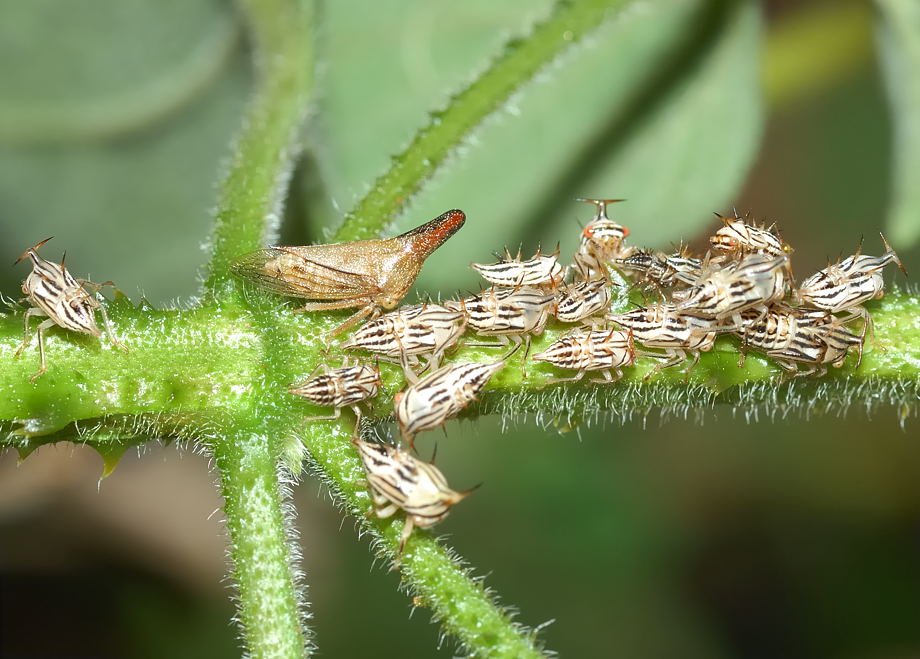
- Adult body length 8mm
- The Lantana Treehoppers are also known as Lantana sap-sucking bugs. They are common in Brisbane but hardly be noticed. They camouflage very well. The insects are brown in colour and look like thorns on the host plant. Once we learnt how to recognize them, we find them on every stem of Lantana plants.



- Lantana Treehoppers naturally occurs from Mexico to Columbia. They are introduced from Mexico to NSW and Queensland as a biological control agent of the weed Lantana. Adults and nymphs feed by sucking the sap from stems of host plant. This cause the branches die and weaken the host plant. However, the Lantana Treehoppers are found affecting some non-targeting plant species as well.



- The insect exudes a sugary solution called honeydew from the plants. Like all other hopper species, when they are disturbed, they jump and disappear.
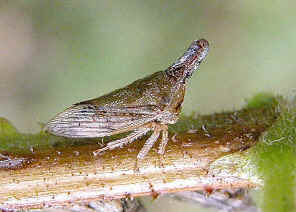

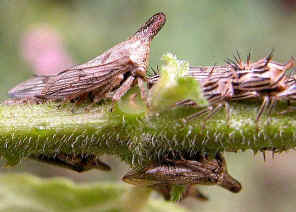
- Adults and different stages of nymphs can be found on the same plant.
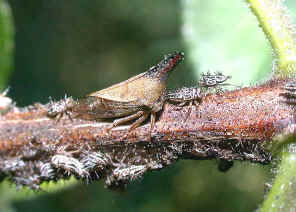
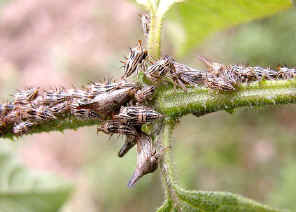
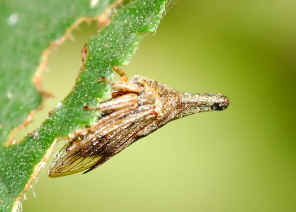
- Insects in the family Membracidae have the pronotum extending back over the abdomen between wings. Many species also have the pronotum extending forward so that the insects look like thorns on the host plant.



The Host Plant
- Lantana - “Most Wanted Weeds” in Australia

- Lantana camara
- Lantana is listed as a Weed of National Significance - one of the “Most Wanted Weeds” in Australia. Lantana is a problem in Brisbane bushland. In 1995 Lantana Treehoppers are introduced from Mexico to NSW and Queensland as a biological control agent of the weed Lantana.
- The Lantana Treehopper does not attack the purple or white flowered Lantana montevidensis.
- Reference and link:
- 1. Aconophora compressa - Australian Insect Common Names, 2005.
- 2. Aconophora compressa - Fletcher, M.J. and Larivière, M.-C. (2001 and updates).
- 3. Aconophora compressa - Alan Fletcher Research Station, Department of Natural Resources and Mines, Queensland, 2003.
- 4. Aconophora on fiddlewood trees -Primary Industries and Fisheries, Queensland, 2009.
